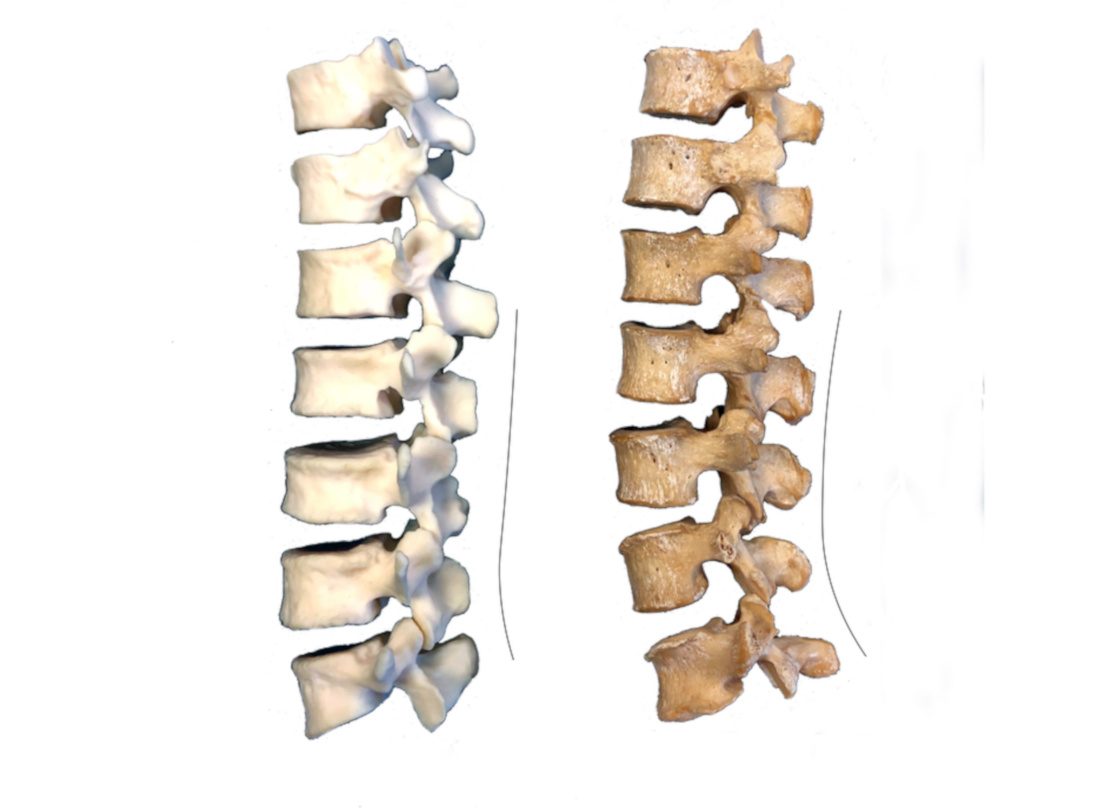The researchers reported that the lower lumbar region of Neanderthals differed slightly from ours. Previous assumptions about the differences seem to have been based on comparing the backbone of Neanderthals with that of modern humans, who were shaped by modern lifestyles. So the features in the lower posterior region of our pre-industrial ancestors hardly differ from those of the archaic human figure. The researchers said that some of the changes that may be associated with the onset of back pain did not appear until the late 19th century.
Crouching villains are chasing mammoths. Numerous studies have clearly refuted this primitive image of Neanderthals: although they differed from us in some anatomical features, they were more similar to us than had long been assumed. This also applies to their posture and the characteristics of their spine. It was mainly clear from previous investigations that Neanderthals did indeed have curved features of the spine that enabled them to walk upright in a stable manner. However, there is still some mystery, especially with regard to the lumbar region – the so-called lumbar lordosis. “This is due to the characteristics of the lumbar vertebrae of Neanderthals – their spines appear to be less curved in this region than modern humans studied in the United States or Europe,” says Scott Williams of New York University.
‘Cross’ on the horizon
But this particular comparison with humans today has raised doubts: By examining the spines of people who lived in the post-industrial era, previous studies may have incorrectly concluded that various features of the spine are due to evolutionary developments. It is likely, however, that these were characteristics that can be traced back to the changed living and working conditions. Because, as the researchers explain, people began to sit more and more often, especially since the late 19th century. This is known to have reached abnormal levels associated with embarrassing situations.
So Williams and colleagues have now investigated how widely this is reflected in the characteristics of the lower vertebrae. They examined the lower spinal regions of male and female modern humans from around the world – both from the post-industrial era and using discoveries from the pre-industrial era. In total, the sample included more than 300 columns. The scientists then compared these results with the results of analyzing the Neanderthal spine.
The effect of modernity is obvious
As they reported, their evaluations showed that, compared to the spine in the post-industrial period, those in the pre-industrial period had an arrangement of the lumbar vertebrae that results in greater curvature in the lumbar region. Apparently, this is the effect of the modern lifestyle. The results indicate that the pre-industrial version is the natural formation in modern humans. The pre-industrial shape also closely matched characteristics the team found in the backbone of Neanderthals: They differed significantly from those of modern humans but not those of pre-industrial humans. “Neanderthals seem to be slightly different from modern humans in the configuration of their lumbar vertebrae, and therefore likely have lumbar curvature features like we do,” says Williams.
So, as for us today, it makes sense: “Decreased physical activity, poor posture and use of furniture, and other lifestyle changes that came with industrialization have resulted in insufficient soft tissue structures to support normal lumbar lordosis during development,” explains Williams. “To compensate for this, our lower back bones acquired a much more pronounced curvature than those of our pre-industrial and Neanderthal ancestors. This may have contributed to the prevalence of lower back pain we find in post-industrial societies.”
Finally, the researchers also emphasized the importance of their study to anthropological research: When comparing spine traits between modern humans and archaic humans, it is important to consider pre-industrial modern humans, Williams and colleagues write.
Source: New York University, professional article: PNAS Nexus, doi: 10.1093/pnasnexus/pgab005

“Alcohol buff. Troublemaker. Introvert. Student. Social media lover. Web ninja. Bacon fan. Reader.”







More Stories
Strange pattern in inorganic compounds
This vitamin is missing from muscle pain
What is dark matter? This phenomenon is explained simply